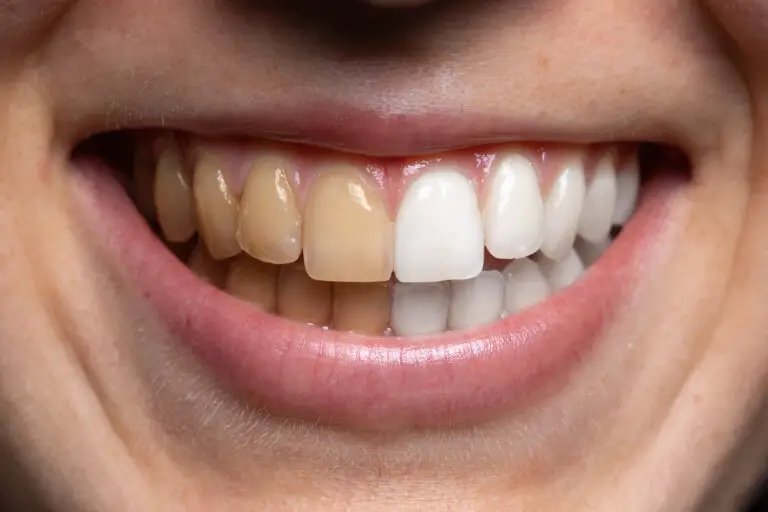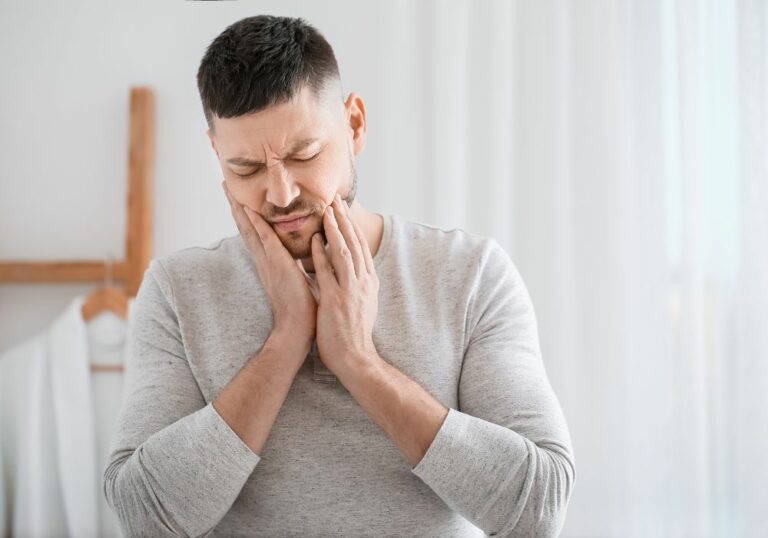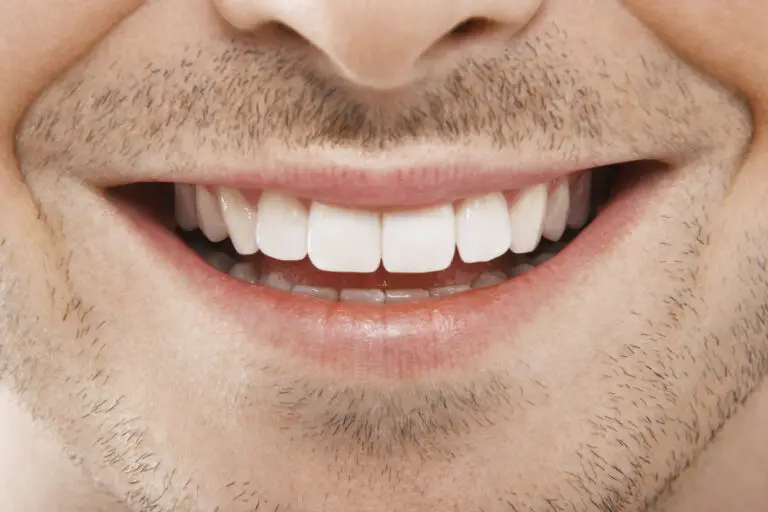Are you tired of trying every teeth whitening product out there only to be disappointed with the results? Do you wonder what truly whitens teeth and if there is a natural way to achieve a brighter smile? Look no further, as we explore the science behind teeth whitening and provide some tips for achieving a whiter smile.
To understand what truly whitens teeth, we must first understand the anatomy of our teeth. The outer layer of our teeth, known as the enamel, is responsible for protecting our teeth from damage and stains. However, over time, the enamel can become stained due to factors such as aging, smoking, and consuming certain foods and drinks. Teeth whitening products work by removing these stains and restoring the natural color of the enamel. But which products are truly effective, and are there any natural remedies that work just as well? We will explore these questions and more in this article.
Whether you are looking to achieve a Hollywood-worthy smile or simply want to improve the appearance of your teeth, understanding what truly whitens teeth is key. By learning about the science behind teeth whitening and exploring different products and natural remedies, you can make an informed decision about how to achieve a brighter, more confident smile.
Understanding Tooth Discoloration
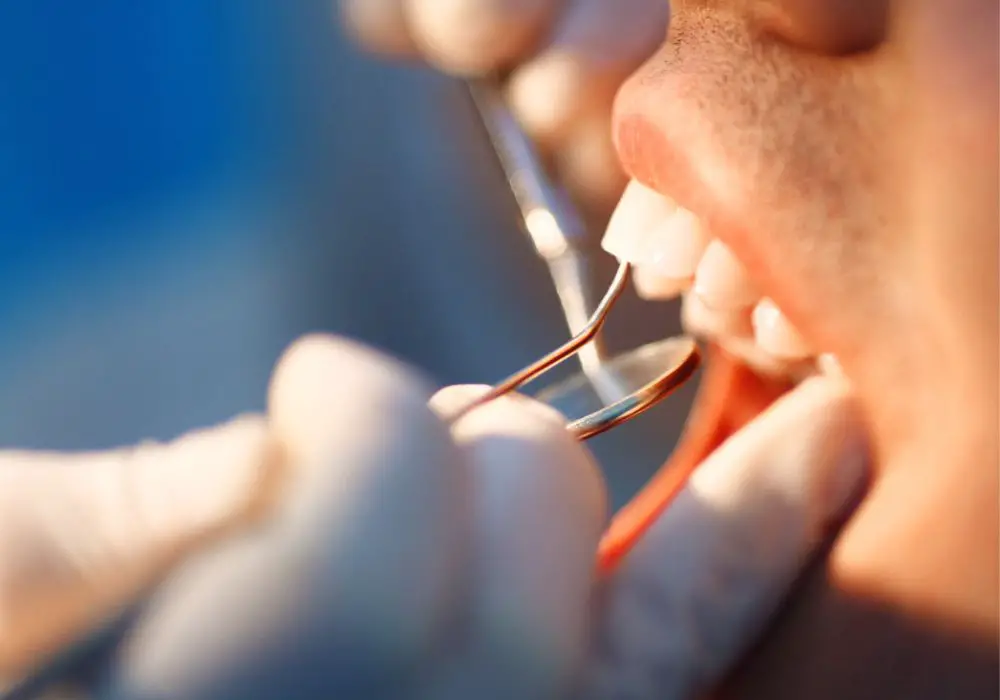
Tooth discoloration is a common dental problem that affects people of all ages. Discolored teeth can make you feel self-conscious and affect your self-esteem. Understanding the causes and types of tooth stains can help you take steps to prevent or treat discoloration.
Causes of Tooth Discoloration
There are many factors that can cause tooth discoloration. Some of the most common causes include:
- Aging: As you age, the enamel on your teeth can become thinner, revealing the yellowish dentin underneath.
- Poor oral hygiene: Not brushing and flossing regularly can lead to the buildup of plaque and tartar, which can cause teeth to become discolored.
- Tobacco use: Smoking or chewing tobacco can cause yellowing of the teeth.
- Foods and drinks: Certain foods and drinks, such as coffee, tea, red wine, and berries, can stain your teeth over time.
- Medications: Some medications, such as antibiotics, can cause tooth discoloration.
- Trauma: Trauma to the teeth, such as from a fall or accident, can cause the teeth to become discolored.
Types of Tooth Stains
There are two main types of tooth stains: extrinsic and intrinsic.
- Extrinsic stains: These stains occur on the surface of the tooth and are caused by external factors such as food, drinks, and smoking. Extrinsic stains are usually easier to remove with professional teeth cleaning or over-the-counter whitening products.
- Intrinsic stains: These stains occur within the tooth and are caused by internal factors such as aging, trauma, or medication use. Intrinsic stains are often more difficult to remove and may require professional teeth whitening or other dental procedures.
By understanding the causes and types of tooth stains, you can take steps to prevent or treat discoloration and maintain a bright, healthy smile.
Natural Teeth Whitening Methods
If you’re looking for natural ways to whiten your teeth, you’re in luck! There are several easy and effective methods you can try at home. In this section, we’ll cover two main categories of natural teeth whitening methods: dietary changes and home remedies.
Dietary Changes
What you eat and drink can have a significant impact on the color of your teeth. Some foods and drinks can cause staining, while others can help keep your teeth white. Here are a few dietary changes you can make to help whiten your teeth:
- Avoid staining foods and drinks: Foods and drinks that are high in pigments, such as coffee, tea, red wine, and berries, can stain your teeth over time. Try to limit your consumption of these items, or brush your teeth shortly after consuming them to minimize staining.
- Eat crunchy fruits and vegetables: Crunchy fruits and vegetables, such as apples, carrots, and celery, can help scrub away surface stains on your teeth.
- Increase your calcium intake: Calcium is essential for strong, healthy teeth. Foods that are high in calcium, such as milk, cheese, and yogurt, can help keep your teeth strong and white.
Home Remedies
There are several natural home remedies you can try to whiten your teeth. Here are a few of the most popular:
- Baking soda and hydrogen peroxide: Mix a small amount of baking soda with hydrogen peroxide to create a paste. Brush your teeth with the paste for a few minutes, then rinse thoroughly.
- Oil pulling: Swish a tablespoon of coconut oil around in your mouth for 15-20 minutes, then spit it out. Oil pulling can help remove surface stains on your teeth.
- Apple cider vinegar: Dilute apple cider vinegar with water, then swish it around in your mouth for a few minutes. Rinse thoroughly with water afterwards. Apple cider vinegar can help remove stains on your teeth, but be careful not to use it too often, as it can erode tooth enamel.
Remember, natural teeth whitening methods may not work as quickly or effectively as professional treatments. However, they can be a great way to maintain the whiteness of your teeth and promote good oral health.
Professional Teeth Whitening Procedures
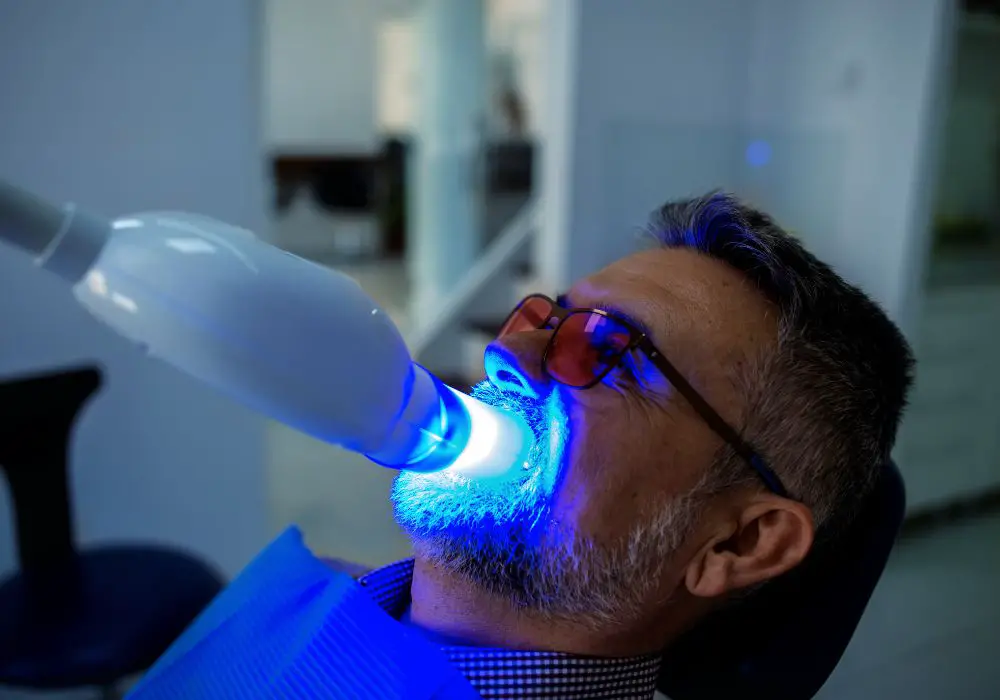
If you’re looking for a more effective way to whiten your teeth, professional teeth whitening may be the solution for you. Here are two popular professional teeth whitening procedures:
Bleaching
Bleaching is a common professional teeth whitening procedure that can be done in a dentist’s office or at home with a custom-fitted tray. The process involves applying a bleaching agent, usually hydrogen peroxide or carbamide peroxide, to the teeth. The bleaching agent breaks down stains and discoloration on the surface and deep inside the teeth, resulting in a brighter, whiter smile.
In-office bleaching is the quickest way to whiten your teeth and usually takes about an hour to complete. Your dentist will apply a high-concentration bleaching gel to your teeth and activate it with a special light. This process can whiten teeth by several shades in just one appointment.
At-home bleaching involves using a custom-fitted tray filled with a lower concentration bleaching gel. You wear the tray for a specified amount of time each day until you achieve your desired results. At-home bleaching may take longer to see results, but it can be more convenient for those who prefer to whiten their teeth at home.
Laser Whitening
Laser teeth whitening is a newer professional teeth whitening procedure that uses a laser to activate a bleaching gel applied to your teeth. The laser helps to break down stains and discoloration on the surface and deep inside the teeth, resulting in a brighter, whiter smile.
The procedure usually takes about an hour to complete and can whiten teeth by several shades in just one appointment. Laser teeth whitening is more expensive than other professional teeth whitening procedures, but it can be a good option for those who want to see quick results.
It’s important to note that professional teeth whitening procedures are not suitable for everyone. If you have sensitive teeth or gum disease, you may not be a good candidate for teeth whitening. It’s always best to consult with your dentist before undergoing any teeth whitening procedure.
Over-The-Counter Teeth Whitening Products
If you want to whiten your teeth at home, there are many over-the-counter teeth whitening products available. These products are convenient and affordable, but they may not be as effective as professional treatments. Here are two types of over-the-counter teeth whitening products you can try:
Whitening Toothpastes
Whitening toothpastes are a popular choice for people who want to whiten their teeth at home. These toothpastes contain mild abrasives that can help remove surface stains on your teeth. Some whitening toothpastes also contain hydrogen peroxide, which can help lighten the color of your teeth over time.
When shopping for a whitening toothpaste, look for one that has the American Dental Association (ADA) Seal of Acceptance. This seal indicates that the toothpaste is safe and effective.
Keep in mind that whitening toothpastes may not be as effective as other types of teeth whitening products. If you have deep stains or discoloration, you may need a more powerful treatment.
Whitening Strips
Whitening strips are another popular choice for at-home teeth whitening. These thin, flexible strips are coated with a whitening gel that contains hydrogen peroxide. You apply the strips to your teeth and leave them on for a set amount of time, usually between 5 and 30 minutes.
Whitening strips are easy to use and can be very effective at removing surface stains on your teeth. However, they may not be as effective at removing deep stains or discoloration.
When shopping for whitening strips, look for a product that is comfortable to wear and easy to apply. You should also make sure that the strips are safe for your teeth and gums.
Overall, over-the-counter teeth whitening products can be a good option if you want to whiten your teeth at home. However, it’s important to choose a product that is safe and effective. If you have any concerns about your teeth or gums, talk to your dentist before using any teeth whitening products.
Safety and Risks of Teeth Whitening
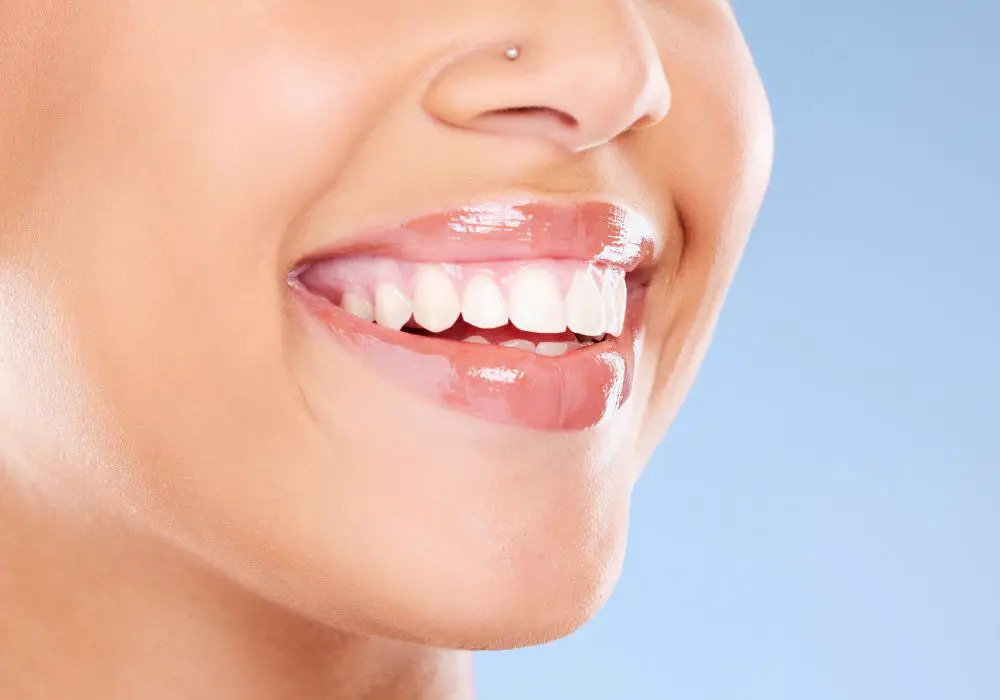
Teeth whitening is generally safe when done correctly and under the guidance of a dental professional. However, like any dental procedure, it does come with some potential side effects and risks. In this section, we will discuss the safety and risks of teeth whitening.
Potential Side Effects
Some potential side effects of teeth whitening include:
- Tooth sensitivity: This is the most common side effect of teeth whitening. You may experience some sensitivity to hot or cold temperatures for a few days after the procedure.
- Gum irritation: Whitening products can irritate the gums, causing them to become red and swollen. This is usually temporary and will go away on its own.
- Uneven whitening: Some teeth may whiten more than others, giving your smile an uneven appearance. This is more likely to occur with at-home whitening products than with professional in-office treatments.
When to Consult a Dentist
While teeth whitening is generally safe, there are some situations where you should consult a dentist before undergoing the procedure. These include:
- Tooth decay or gum disease: If you have untreated tooth decay or gum disease, it’s important to address these issues before whitening your teeth. Whitening products can irritate already sensitive teeth and gums, making the problem worse.
- Restorations: Teeth whitening products do not work on restorations such as fillings, crowns, and veneers. If you have restorations, they may need to be replaced after whitening to match your newly whitened teeth.
- Pregnancy or breastfeeding: While there is no evidence that teeth whitening is harmful during pregnancy or breastfeeding, it’s best to err on the side of caution and avoid whitening your teeth during these times.
Overall, teeth whitening is a safe and effective way to brighten your smile. However, it’s important to understand the potential risks and to consult a dentist before undergoing the procedure.
Maintaining Your White Smile
Once you’ve achieved a dazzling white smile, you’ll want to do everything you can to keep it that way. Here are some tips to help you maintain your pearly whites.
Oral Hygiene Practices
Good oral hygiene is essential for maintaining a white smile. Here are some practices to keep in mind:
- Brush your teeth at least twice a day with a fluoride toothpaste.
- Floss daily to remove plaque and food particles from between your teeth.
- Use a mouthwash to kill bacteria and freshen your breath.
- Avoid smoking and using tobacco products, which can stain your teeth and cause bad breath.
- Limit your consumption of coffee, tea, and red wine, which can also stain your teeth.
Regular Dental Checkups
Regular dental checkups are important for maintaining good oral health and a white smile. Here’s why:
- Your dentist can identify and treat any dental problems before they become more serious.
- Your dentist can remove any plaque or tartar buildup that may be causing discoloration.
- Your dentist can provide you with professional teeth cleaning to remove surface stains and brighten your smile.
- Your dentist can offer advice on how to maintain good oral hygiene and a white smile.
By following these tips, you can maintain your white smile and keep your teeth healthy and strong. Don’t forget to visit your dentist regularly for checkups and professional teeth cleaning.
Frequently Asked Questions
What are some effective ways to whiten teeth?
There are several effective ways to whiten teeth, including professional teeth whitening treatments, at-home teeth whitening kits, and natural remedies. Professional teeth whitening treatments, such as laser teeth whitening or bleaching, are typically the most effective but can be expensive. At-home teeth whitening kits, such as whitening strips or gels, can also be effective but may take longer to see results. Natural remedies, such as brushing with baking soda or oil pulling, can also help whiten teeth but may not be as effective as other methods.
Are there any natural remedies that can whiten teeth?
Yes, there are several natural remedies that can help whiten teeth, including brushing with baking soda, oil pulling, and eating crunchy fruits and vegetables. However, it is important to note that natural remedies may not be as effective as other methods and may take longer to see results.
What are the best teeth whitening products on the market?
There are many teeth whitening products on the market, including whitening toothpaste, whitening strips, and at-home whitening kits. The best product for you will depend on your individual needs and preferences. It is important to choose a product that is safe and effective, and to follow the instructions carefully.
How long does it take to see results from teeth whitening?
The length of time it takes to see results from teeth whitening can vary depending on the method used. Professional teeth whitening treatments can often provide immediate results, while at-home kits may take several weeks to see noticeable changes. Natural remedies may also take longer to see results.
Can teeth whitening be harmful to your teeth?
Teeth whitening is generally considered safe when done properly. However, overuse or misuse of teeth whitening products can cause damage to the teeth and gums. It is important to follow the instructions carefully and to choose a product that is safe and effective.
What should I look for when choosing a teeth whitening method?
When choosing a teeth whitening method, it is important to consider factors such as effectiveness, safety, and convenience. It is also important to choose a method that fits within your budget and lifestyle. It is recommended to consult with a dentist before starting any teeth whitening treatment.


